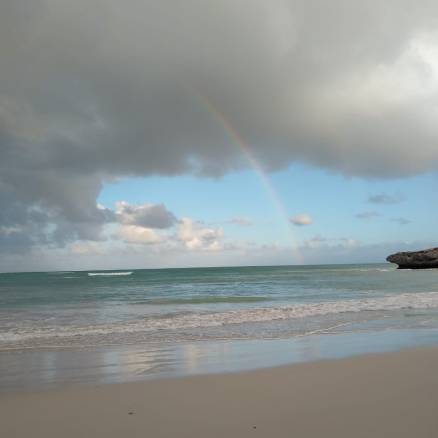Cape Town is a place of extremes. Balanced between the rugged slopes of Table Mountain and the crashing shores of the Atlantic, the city is marked by dramatic juxtapositions. We’ve spent the last month exploring these juxtapositions between land and water, wealth and poverty, hope for democracy and resignation to corruption. I didn’t know what to expect from South Africa, but I’m leaving with a much more vivid picture than I ever could have imagined.

The first thing that strikes me about Cape Town is its natural beauty. We’ve been on several hikes over the mountains, and I’ve been stunned every time by the way the light filters through the cliffs and how the view is always changing. I’ve loved living on the coast, and could probably spend hours walking up and down South Africa’s shores. The beaches I’ve visited are dotted with granite boulders and eroded slabs of rock where foamy seawater can sometimes burst into the air like fireworks. These boulders have also made the perfect homes for a number of sea creatures—I’ve seen several different types of sea anemone, limpets, hermit crabs, urchins, Portuguese-Man-of-Wars, and many more than I could not identify. On the Atlantic coast, where Cape Town is, we also saw seals and dolphins, and even went swimming with penguins! Which brings me to another interesting juxtaposition of South Africa—the water on the Atlantic coast is freezing, whereas the water west of Cape Point (the southernmost tip of Africa), is fairly warm. The two seas meet here, creating a rich and unique ecosystem.

Unfortunately, South Africa’s position between the two oceans made it a target of colonial exploitations. Portuguese traders named it El Capo de Las Tormentas—The Cape of Storms—because of dangerous weather. Not long after, the Dutch rebranded it as The Cape of Good Hope, and set up a refreshment stop for their trading ships in the 1650s. Slaves were imported from all around the Indian Ocean to build the post and ensuing settlement. The present-day Colored population of South Africa are largely descendants of these slaves, although a fair amount of racial intermixing has often occurred, sometimes in the form of rape. Both the Coloreds and Blacks (descendants of indigenous peoples) were brutally victimized at the hands of the apartheid system. Apartheid was legally dismantled in 1994, but its scars are still visible everywhere—in economic stratification and deep poverty, racial tensions, political discourse, and more. The people I spoke to said that the initial high hopes for democracy have been sorely disappointed. Many were frustrated with rampant corruption on most or all sides of the political scene. When we had scheduled power outages every day for about a week, I heard many different explanations. Some said it was because Cyclone Idai had damaged power plants in Mozambique, others said it was a show of political power, and still others said that the electrical infrastructure had been allowed to decay. No matter what the cause, scheduled power outages occurred up to three times a day for about two hours each (at least where we were staying). And although I enjoyed the candlelit dinners and long conversations with my host family, food spoiled and businesses suffered with each power outage.
Staying in South Africa has exposed me to experiences and ideas I could never have imagined. Leaving Cape Town is hard—I’ve had an amazing time here with my friends and host families. But I’ve also learned about the hard history of this place. South Africa, like every or most places on Earth, has grown from blood and beauty, from storms and hopes.

Note: I use the words “Colored,” “Black,” and “White” as I have seen them used in South Africa. I do not wish to imply any stereotypes, but do want to portray how these groups are categorized in South African society.
Learn more about the history of health disparities in South Africa


Leave a Reply